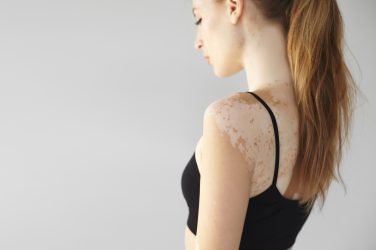
By Mimi Greenwood Knight
You see it in the mirror. The part in your hair is widening. You notice bald spots. You’re shedding more hair than usual. These are all signs of female hair loss. If you’re seeing them, it’s probably time to consult a dermatologist, endocrinologist, or hair specialist.
We all lose and regrow hair throughout our lives (between 50 and 100 strands per day). But when more falls out than grows in, you’re experiencing hair loss, of which there are three different types. Anagen effluvium is caused by medications such as chemotherapy which poisons growing hair follicles. Telogen effluvium happens when an increased number of hair follicles reach the stage where they naturally fall out. Androgenetic alopecia/female pattern alopecia/female pattern hair loss (FPHL)/baldness, the most common, is when hair thins over the top of the head and on the sides.
It’s estimated that 40% of all hair-loss sufferers — including around 30 million US women — will experience noticeable hair loss, most often female-pattern hair loss (FPHL).
Female hair loss is most common in:
- Women over 40
- Women who’ve just had babies
- Women who’ve undergone chemo or been affected by other harsh medications
- Women who wear tight ponytails, and tight braids, use harsh chemicals on their hair
- Menopausal women
Treatment depends on the hair loss cause. It can be due to stress or hormonal changes such as those that occur with pregnancy and should stop on its own over time. Similarly, hair loss due to tight braids, ponytails, or harsh chemical treatment can be rectified by stopping the practice. Hair loss due to nutritional deficiencies can be treated with a healthy diet and supplementation. Rogaine helps with FPHL but must be used indefinitely and avoided when you’re pregnant, plan to become pregnant, or are breastfeeding.
For a more permanent solution, there’s follicular unit extraction (FUE) such as SmartGraft, which takes individual hair follicles from one area of your head and moves them to another area where hair is thinner or absent. Hair restoration professionals use “micropunches” to harvest single hair follicles and move them, leaving behind almost no signs of extraction and with little or no side effects.
There’s also the Hairmax LaserComb and the Theradome LH80 PRO, both FDA-cleared, low-light lasers for treating FPHL. Other medications currently being studied include spironolactone and other anti-androgens, finasteride and other alpha-reductase enzyme inhibitors, estrogens, prostaglandin analogs, steroids, and additional light treatments.
In the meantime, ask your favorite stylist about tips and tricks such as a short, layered haircut that can make your hair loss less noticeable.
DID YOU KNOW?
Hair loss myths abound, including:
- Hats cause baldness
- Shaving your head makes it grow back twice as thick
- Hair loss is inherited from only the mother’s side
- Dandruff makes your hair fall out
- Standing on your head stimulates hair growth
- Washing hair in cold water helps prevent hair loss
None of these are true.










